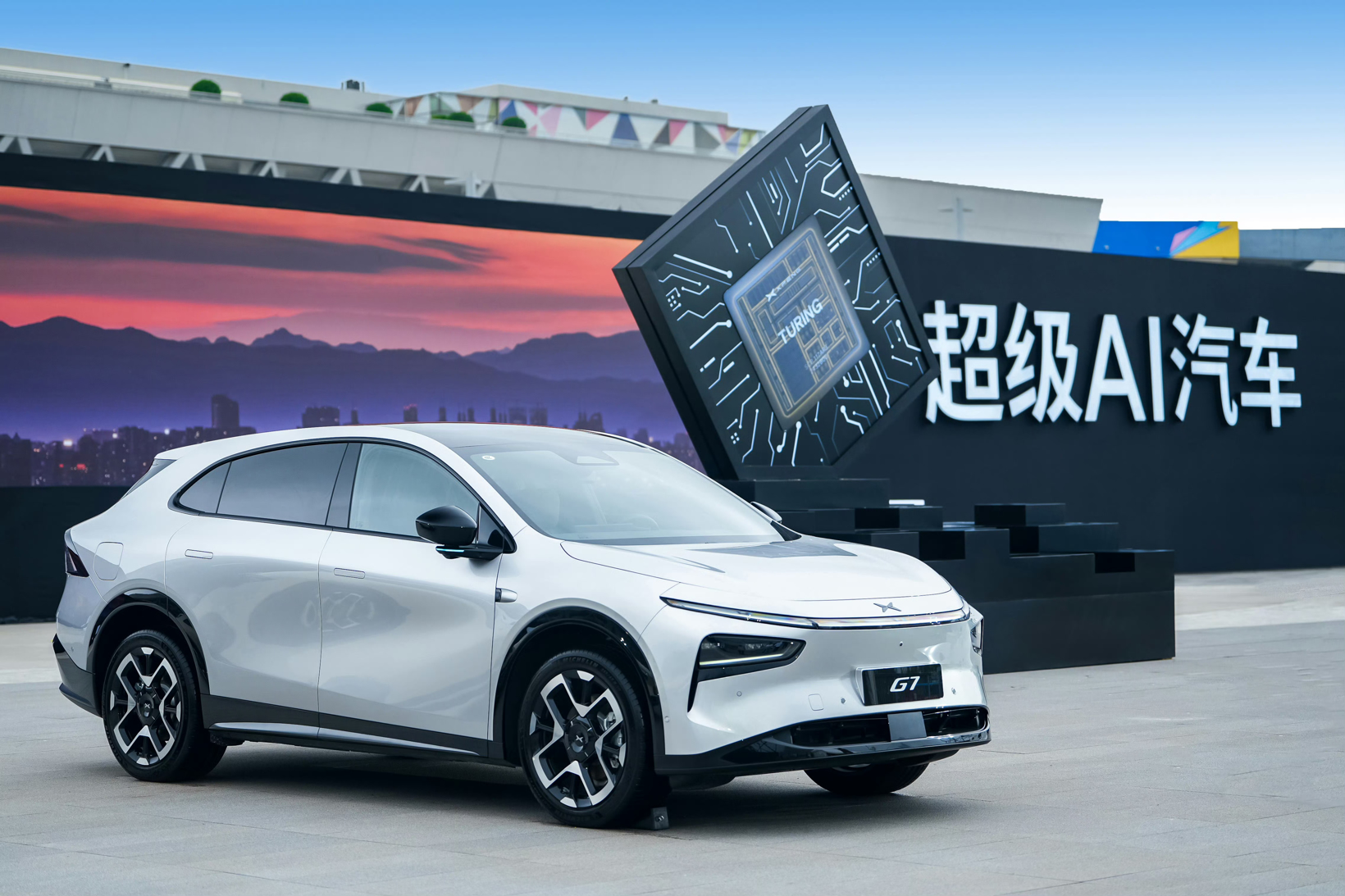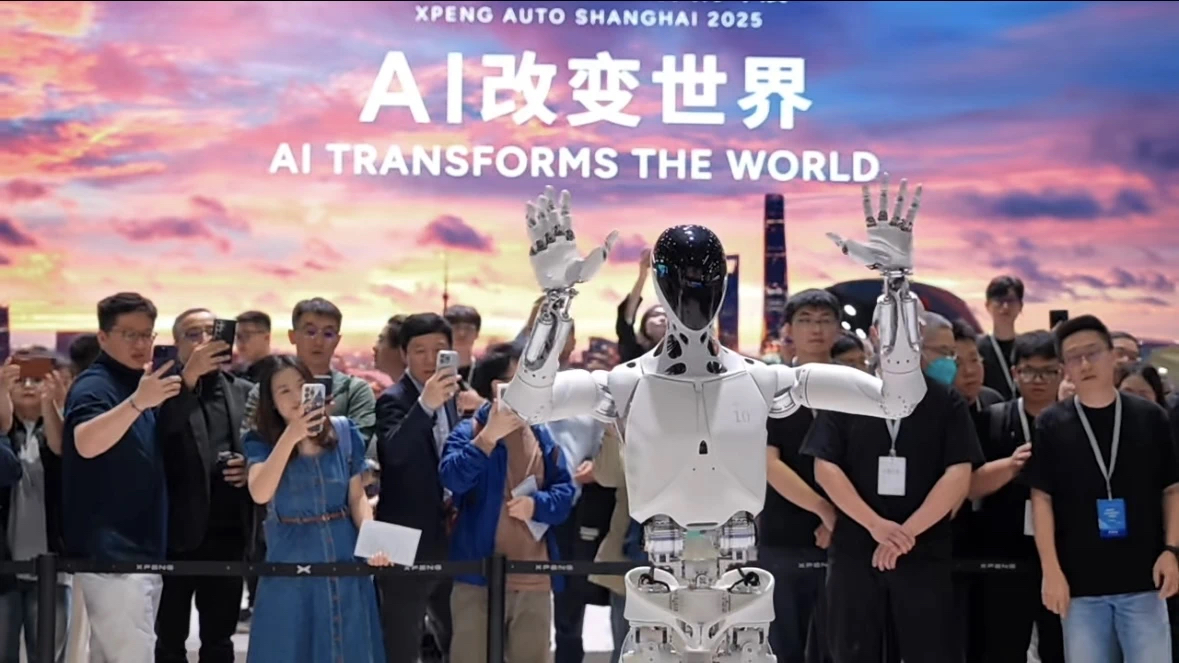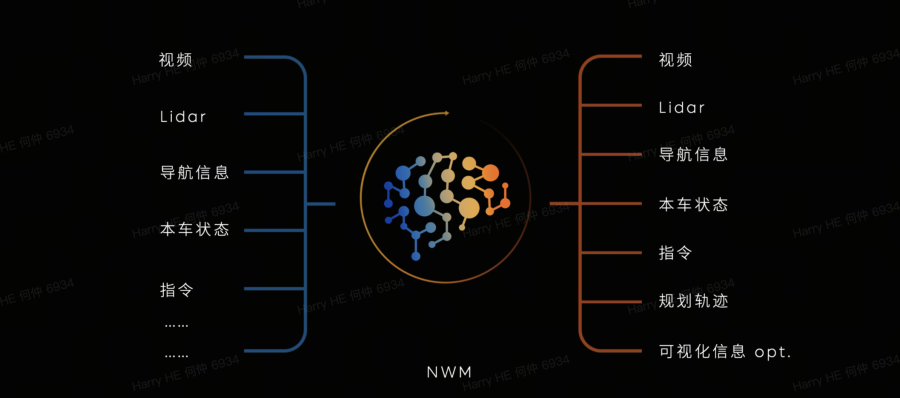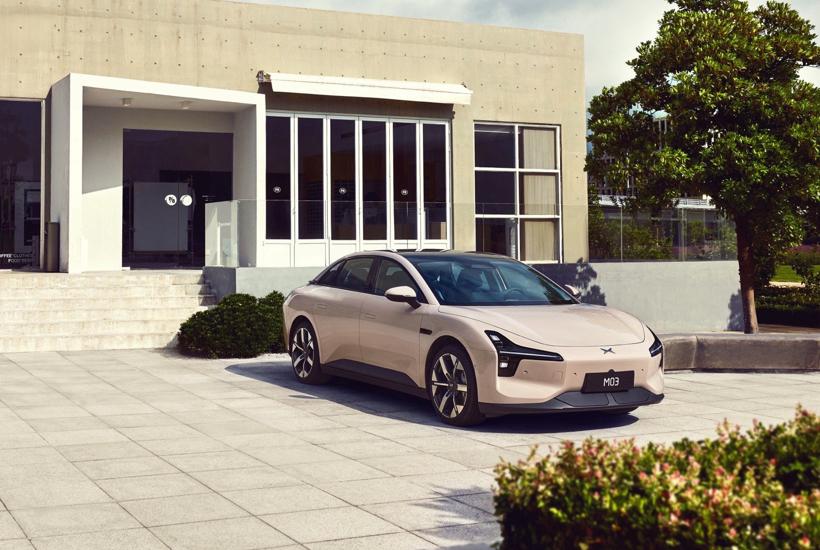Under huawei's "shadow," wm motor, nio, and xpeng urgently "change defense"?
Every year, the automotive market has very specific keywords.
After going through the "chip shortage," "high battery costs," "supply chain cost reduction," and "price wars," and after a long period of brewing, intelligent driving has finally become a key "open card" that major car manufacturers have laid out on the table.
In 2025, many major car manufacturers and intelligent driving companies have launched numerous new intelligent driving technologies and products. However, this year does not seem to be the most competitive year for car companies in terms of intelligent driving.
Near the end of the year, NIO and XPeng almost simultaneously replaced the key leaders of their autonomous driving business.
Bai Yuli, head of NIO's artificial intelligence platform, and Ma Ningning, head of NIO's world model, have recently left the company. According to public information, Huang Xin, head of NIO's intelligent driving products, has also departed. It is reported that to better adapt to the new AI large model development process, NIO's intelligent driving team has completed its third organizational adjustment within a year.
Notably, on October 10th, it was learned by Gasgoo Auto that XPeng Motors' Autonomous Driving Center issued an internal letter stating that Li Liyun will no longer serve as the head of the Autonomous Driving Center, and Liu Xianming, the person in charge of the World Base Model, will take over the position.
The above two pieces of news have both been confirmed by the company.
Notably, before this, after losing several key figures in intelligent driving technology consecutively, Li Auto's head of autonomous driving development, Lang Xianpeng, issued an internal letter last month announcing the division of the Li Auto Intelligent Driving team into 11 secondary departments to advance AI large model development with a more streamlined organization. Earlier, Geely Auto had "closed, suspended, merged, and transferred" several internal intelligent driving R&D teams and introduced Qianli Technology as a core supplier.
At the same time, multiple car companies have chosen to collaborate with Huawei Intelligent Driving.
Automakers' series of preparations in the intelligent driving field all seem to unanimously indicate one fact: the current competition in intelligent driving cannot yet be described as "fierce," because competition at a higher level is still to come.
Under the "shadow" of Huawei, car companies' self-developed intelligent driving urgently need to answer two questions.
Automakers' in-house development of intelligent driving has always been subject to skepticism.
To this day, the tone of skepticism has not changed much, and these voices mainly revolve around two topics: one is the doubt about the intelligent driving capabilities of car-making companies, as "each profession has its specialty," and it is best for professionals to handle professional matters; the other is that only a few car companies have "broken even" in car manufacturing, and with one hand grasping car manufacturing and the other intelligent driving, how long can car companies continue to "burn money" like this?
The existence is extremely reasonable.
Often, doubt may not be validated as the ultimate truth, but it absolutely has a rational basis for existence.
Under the comparison with Huawei's intelligent driving, the "necessity" of car companies' self-developed intelligent driving has considerably dimmed. As time has shown, the voice of the car companies' "soul theory" has almost vanished, while what has increased is the "authority" of Huawei's intelligent driving in the industry after market validation.
Huawei and GAC have launched a new brand called "Qijing"; the first model of "Shangjie," a collaboration between Huawei and SAIC, has been released; Dongfeng has also met with Huawei executives to deepen communication and cooperation.
In a sense, within the Chinese automotive industry, Huawei seems to have become synonymous with intelligence. A car labeled with Huawei's "intelligent manufacturing" appears to have greater market appeal.
As 2025 approaches, Huawei Intelligent Driving continues to seek new breakthroughs.
At the Shanghai Qian Kun Intelligent Technology Conference on April 22, Huawei's intelligent driving technology made further advancements towards higher levels.Huawei has released the QianKun Intelligent Driving ADS 4.0 system, upgrading its architecture to WEWA (World Behavior Model) for the first time, with the highest version supporting commercial L3 on highways.
Huawei is lowering its stance in its business model and attempting to open up more collaboration opportunities. According to industry media reports, Huawei is exploring new cooperation models with car manufacturers, further handing over data sovereignty and algorithm sovereignty to them, while relinquishing brand co-building and channel control. This new model is tentatively named "HI PLUS."
In addition, Huawei's intelligent driving has already demonstrated commercial viability in Huawei's past financial reports.
At the same time, as more and more car companies are defecting to Huawei's intelligent driving system, the "vulnerability" of self-developed intelligent driving car companies is becoming increasingly apparent.
Currently, the number of car companies still committed to independently developing intelligent driving may not be down to a single entity or fighting alone, but they can definitely be described as "few and far between."
Among them, a series of new forces represented by Xpeng are inevitably at the forefront.

Image Source: XPeng Motors
Certainly, the self-research group will be a niche elite game. Only those leading car companies that view intelligent driving as an absolute core strategy and possess strong financial and technical reserves will insist on full-stack self-research.
Their goal is to become an "Apple-like" entity, controlling the entire ecosystem from hardware to software, and pursuing an ultimate experience loop and profit margin.
The ones who succeed on this path will be rare, but once they do, the barriers they establish will be extremely high.
However, it must be admitted that the fact is Huawei's intelligent driving "shadow" is both a pressure and a mirror, reflecting the opportunities and costs of each path. For companies like Xiaopeng, their perseverance is worthy of respect, but ultimately the market will only crown the successful ones. This ultimate test concerning "soul" and "survival" will not be answered by debates but by the next intersection, with each choice made by users using the steering wheel.
The window of time left for them to prove themselves is gradually closing.
Under this shadow, companies like Xiaopeng urgently need to answer two questions: Where is the technological superiority? And when will the technology be monetized?
The Next Technological Singularity: Building Our Own "World Models"
What will car companies compete in the next stage of intelligent driving?
The answer to this question lies in the reasons behind the "defensive switch" between NIO and XPeng in intelligent driving.
NIO's official response stated that this was a "proactive organizational restructuring.""Strategic Initiative of Sprinting Towards World Model 2.0."
Last July, at the NIO IN 2024 NIO Innovation Technology Day, NIO officially launched what is claimed to be "China's first intelligent driving world model, NWM (NIO WorldModel)." This model is capable of fully understanding information, generating new scenarios, and predicting future possibilities with a multivariate autoregressive generative model.
NWM can simulate 216 possible trajectories and find the optimal path within 100 milliseconds; it can also generate 120 seconds of imagined video based on a 3-second video prompt input.
In terms of XPeng, the company's response to the recent adjustment in the leading position for intelligent driving is as follows: The VLA large model for autonomous driving is an important application of the world foundation model, but the more challenging task is to enable the world foundation model to have the capability to simulate the entire world. Dr. Liu Xianming, with a background in cutting-edge research in machine learning and computer vision, is an outstanding technical expert in the fields of artificial intelligence and autonomous driving.In the future, the team will be led to accelerate the comprehensive application of the Xiaopeng Physical World Foundation Model in the AI automotive field, expanding the generational leading advantage of intelligent assisted driving.
GaiShi Auto has learned that in April this year, Xpeng held an AI technology sharing session in Hong Kong, officially revealing its development of the large-scale autonomous driving model with 72 billion parameters - the "Xpeng World Base Model."
This model will not only provide XPeng Motors with a new intelligent driving "brain," but also be deployed to the vehicle through cloud distillation technology, simultaneously empowering various terminal devices such as XPeng's AI robots and flying cars.
According to reports, the XPeng AI team has been working on the development of a foundational model for physical world AI for over a year. They have restructured their methodology in the physical AI domain from the ground up, starting with the underlying AI infrastructure. The foundational model under development uses the largest amount of model data in history and is the most advanced physical AI large model in China.
Industry insiders believe that this is a key step in conquering large-scale L4, allowing for the rapid deployment of Turing AI autonomous driving to other countries worldwide. The technology can also be reused in AI automobiles and AI robots, which is beneficial for building its "AI+Mobility" ecosystem.
In the middle of this year, during the XPeng financial report meeting, He Xiaopeng also made it clear that 2025 will be the starting point for the comprehensive application of XPeng's physical world foundational model in the AI automotive field.The next step for XPeng Motors will be to rapidly advance from the development of L2+ assisted driving to higher levels of L3 and L4 autonomous driving technology, with the expectation of achieving generational leadership.
In other words, although NIO and XPeng have chosen different paths and levels of technological implementation, both ultimately focus on the cutting-edge field of "world models."
Why is this?
Achieving higher levels of autonomous driving technology might be the answer.

Image Source: XPeng Motors
"In 2027, driving might truly take a break!" said Huawei's Car BU CEO Jin Yuzhi at the New Energy Vehicle Conference, bringing the focus back to "L3-level autonomous driving" in the industry.
As previously mentioned, in April this year, Huawei released the QianKun Intelligent Driving ADS 4.0 system, upgrading its architecture to WEWA (World Behavior Model) for the first time, with its highest version supporting commercial L3 highway driving.
To achieve L3 autonomous driving, the world model is no longer a "nice-to-have" technical option but an "indispensable" core foundation. It needs to evolve from an excellent perception and prediction tool into an "intelligent agent" capable of understanding responsibility, managing risk, and making reliable decisions.
So, what exactly is a world model?
NIO's official website explains that the World Model represents another leap forward in intelligent driving technology following the BEV & Transformer, Occupancy Network (OCC), and end-to-end technologies.
World models possess a panoramic understanding of information, comprehend physical laws in the dimension of imagination, and reconstruct the world.
In simple terms, it involves simulating the complex cognitive processes of the human brain to mimic human perception and decision-making, thereby providing autonomous driving systems with the ability to predict and adapt to dynamic environments.

Image Source: NIO Official Website
The world model can be described as the "inner drama" of AI, the internal system that it uses to understand, predict, and simulate how the real world operates. It is a crucial step in transforming intelligent driving and all advanced artificial intelligence from "a straight-A student who memorizes facts" into "a true brain with common sense and wisdom."
However, the "world models" of Huawei, Xiaopeng, and NIO are each different.
NIO has NWM, and XPeng has the World Base Model. However, Huawei Intelligent Driving does not aim to create an all-encompassing single "world model" entity. Instead, it deconstructs the capabilities required for a world model and applies technology to implement each subsystem, ultimately integrating them through top-tier engineering capabilities.
Specifically, there are two core components in Huawei's ADS system that jointly fulfill the function of the "world model": the GOD 2.0 network and the road topology reasoning network.
Currently, it is not easy to definitively judge the advantages and disadvantages of the technical routes of the three companies, but it can be said that NIO and XPeng are both striving to improve their respective L3 technology "platform" projects.
Technology that can be "monetized" is the technology that the market needs.
Beyond technology, the second question that car companies need to address in self-developing intelligent driving is commercialization.
"When can your technology become a healthy business?"
The first half of the era of intelligence can be described as a time of technological "heroism," with the mission of addressing challenges of "creating something from nothing," requiring top scientists to break conventions and establish technological barriers. Wu Xinchou, Li Liyun, and their team successfully established the "technological school" label for XPeng.
When the second half arrives, and the challenge shifts from technical prototyping to scaling, engineering, cost control, and user experience loops, the purely technology-driven model encounters bottlenecks.
At this time, the core leadership of smart driving teams in car companies has shifted from "technical breakthroughs" to "technology + efficiency and commercialization."
Just as Apple reached its peak under Cook (the master of operations) after Jobs (the product definer), the intelligent driving field is also experiencing a similar transfer of power.
Whether it's XPeng's MONA project or NIO's second brand "LeDao," they both point to a more mainstream market, as does Huawei's intelligent driving's entry into the Shangjie H5. In this market, consumers are highly sensitive to price. Intelligent driving, as a core selling point, must achieve an extreme balance between cost and performance.

Image source: XPeng Motors
The commercial success of Huawei's intelligent automotive solutions is a model of "systematic operations." Its advantages lie not only in technology but also in its strong engineering capabilities, rigorous project management, and a delivery system deeply integrated with automotive companies.
Nio and Xpeng, especially Xpeng which is strong in technology, must continuously commercialize their intelligent driving technology in order to survive in the increasingly brutal elimination competition.
One of the biggest challenges Liu Xianming faces after taking office is how to balance "technological foresight" and "product commercialization." He must rapidly transform cutting-edge technologies like the world base model into perceptible product features that users are willing to pay for, while also strictly controlling R&D costs to ensure that the intelligent driving business itself has a healthy financial model.
Additionally, prior to this, XPeng's self-developed intelligent driving was its "moat" against competitive pressures, serving as a defensive asset. However, the collaboration with Volkswagen signifies that this "moat" has transformed into a "power station" that can be exported externally. This means that XPeng's significant R&D investments over the years are beginning to generate direct economic returns beyond just being equipped on its own models.
This greatly alleviated financial concerns about "how long the money burning can last," proving that self-developed technology itself has strong monetization capabilities.
Can this virtuous cycle from technology to business be replicated in the next stage?
For this point, we hope not only that XPeng can achieve it, but also that all intelligent driving manufacturers and self-developed intelligent driving car companies can do it.
Epilogue:
The game of intelligent driving has entered the mid-game, with the stakes increasing and the pace accelerating.
When the altar of technology yields to the battlefield of commerce, the steadfast adherence to "soul" faces the most pragmatic assessment. Whether it's NIO and XPeng's agile leap towards the "world model," or Huawei proving the vitality of its model through profitability, they all point to the same endpoint: technology that can transcend the laboratory and withstand the rigorous market test is the true qualification for survival.
"The concept of a 'world model' is no longer an academic idea floating in the clouds; it must be accurately reflected in the peace of mind behind every steering wheel and manifested in orders that users are willing to pay for. The window of opportunity is closing, and the time the market has given to companies like Xiaopeng to prove themselves is no longer measured in years, but in product cycles that can either be delivered on time or impress consumers."
The next step in the intelligent driving competition will no longer be a showcase of individual technologies, but a comprehensive contest of engineering, commercialization, and ecosystem integration. Those who can find the optimal balance between cutting-edge exploration and cost control, and who can truly transform technology into a universally beneficial and reliable experience, will be the ones to obtain the ticket to the next stage in this high-dimensional competition.
【Copyright and Disclaimer】The above information is collected and organized by PlastMatch. The copyright belongs to the original author. This article is reprinted for the purpose of providing more information, and it does not imply that PlastMatch endorses the views expressed in the article or guarantees its accuracy. If there are any errors in the source attribution or if your legitimate rights have been infringed, please contact us, and we will promptly correct or remove the content. If other media, websites, or individuals use the aforementioned content, they must clearly indicate the original source and origin of the work and assume legal responsibility on their own.
Most Popular
-

At Least 44 Dead in Century-Old Fire! Questioning Hong Kong's Hong Fu Garden: Why Has the Path to Fire Resistance Taken 15 Years Without Progress?
-

Satellite chemical's profits surge! can the 26.6 billion yuan high-end new materials project meet expectations? a review of progress on four major projects
-

Key Players: The 10 Most Critical Publicly Listed Companies in Solid-State Battery Raw Materials
-

Estun Turns Profitable in 2025 Half-Year Report, Industrial Robot Shipments Rank First Among Domestic Brands
-

Avatr Files for IPO on HKEX, Plans to Complete Listing in Q2 2026






